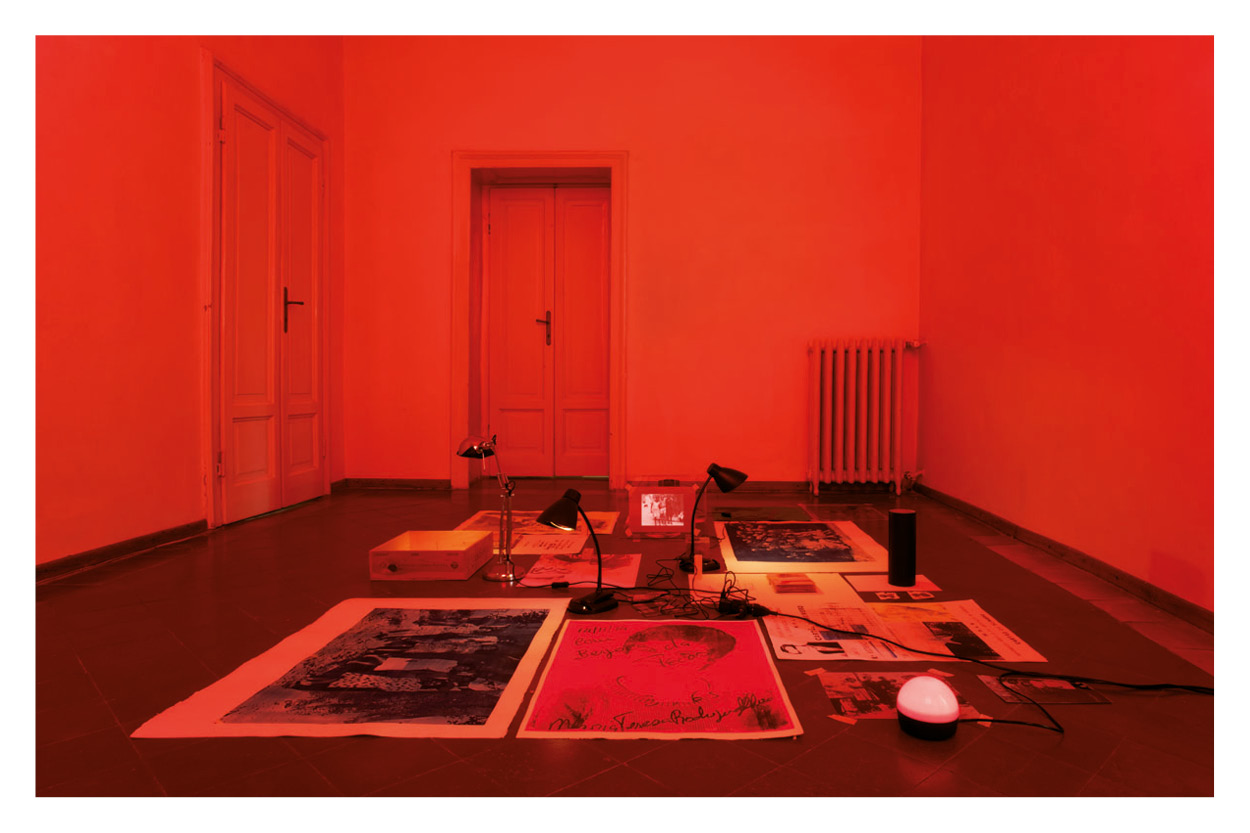Délio Jasse, born in Angola
The relationship between photography and time is central to the work of Délio Jasse, whose artistic quest inserts and superimposes distinct moments, condensed into a single image. The time of the original shot, that of the development, that in which the image comes to life. Then another shot and more development. Ongoing development, as is revealed by the reddish light of the dark room in which we find ourselves. The artist works, in fact, with archive photos, for the most part products of his wanderings through street markets. Images and materials that, without his intervention, would not have been conserved. Moments immortalized to be remembered, yet destined to oblivion. His quest takes as its starting point the collapse of the Portuguese empire and the conditions of the retornados re-entering Portugal from Africa, from their loss of a native land and their need to replace it with another place able to generate the same feeling. Délio Jasse therefore concentrates on details, inverts the levels. He highlights, in his bitter research, official stamps, writings, annotations, and captions that relate a lyrical and political story. It reactivates other people’s memories, showing how the legitimization of a person’s identity is subordinate to bureaucracy, just as the faces are in the background, a mere backdrop to the words.
Olga Schigal, born in Russia
What defines a man? What does he belong to and what belongs to him? Why are we sometimes induced to set out for distant lands, while at the same time desiring to return to our roots? I wonder if childhood is not simply our home, which becomes a memory, an image, when we are adults and transforms itself into an unreachable place. This reflection represented an essential point in Olga Schigal’s artistic quest. The use of the past tense depends on the fact that the artist’s choices over how to live have led her, in recent years, to uproot herself yet again, to understand that her roots may lie in having roots of her own. She chooses, however, to carry with her, in this voluntary disorientation, a sort of family album, the images of which are printed only as negatives. They have to be held against the light to be seen but, at the same time, the light to which they are exposed will determine their disappearance.




